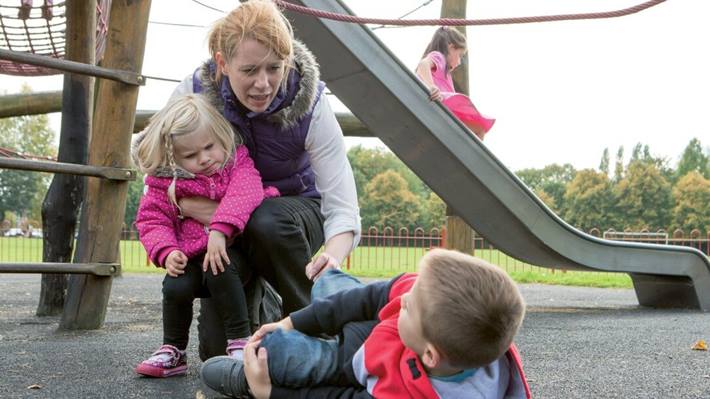Bleeding heavily: learn first aid
Adult first aid for someone who is bleeding heavily, including signs and symptoms to look out for and steps to take in an emergency.
First aid steps to help someone who is bleeding heavily
1. Put pressure on the wound with whatever is available to stop or slow down the flow of blood.
You are acting as a “plug” to stop the blood escaping. The pressure you apply will help the blood clot and stop the bleeding.

2. Call 999.

3. Keep pressure on the wound until help arrives.

Watch Jason's video to learn first aid for heavy bleeding
Meet Jason, a person who suffered heavy bleeding after falling and hitting his face on the bedside table. Learn the first aid steps he took to stop the bleeding and prevent further injury. Skip to 0:53 seconds for the step-by-step first aid process.
Frequently asked questions about first aid for heavy bleeding
What is a Public Access Trauma First Aid kit (PAcT kit)?
These kits are meant for anyone to use, even without training, to treat serious, life-threatening injuries. It may also be called a Public Access Bleed Control kit, Emergency Bleed kit or a Critical Injury pack. They are becoming more common in public places often alongside AEDs and should be used when available if bleeding is severe, sustained and uncontrolled.
What is inside a PAcT kit?
Contents may vary and can include items such as:
- Protective items such as gloves and face shields
- Special dressings for wounds including some that help blood clot
- Tourniquets
- Clear instructions
How do I use a PAcT kit?
The kit is designed so anyone can use it and includes clear instructions inside the pack. The 999 operator will be able to tell you what to do and it’s very important you follow these instructions exactly to prevent causing more harm.
What do I do if the bleeding soaks through the item I've used to press on the wound?
Remove the item and replace with a fresh one, make sure that firm pressure is applied to the wound.
Call 999 as soon as possible. If you can’t call 999, get someone else to do it.
What should I do if there is an embedded object in the wound?
Do not remove it – it's helping plug the hole and stop the blood flow. Instead, apply pressure around the object.
Removing the object from the wound can make the bleeding much worse.
Should I wash the wound?
Don't wash a wound that is bleeding heavily. You may make it bleed more.
For minor cuts and grazes, you can wash the wound to remove any dirt. You should also wash animal bites with soapy water if they are not bleeding heavily.
The person looks pale, feels cold and is dizzy. What does this mean?
This means there isn’t enough blood flowing through the body. It can be life-threatening because it can very quickly lead to other conditions, such as a lack of oxygen in the body’s tissues, potentially causing a heart attack or organ damage. This physical response to an injury or illness is called shock. It is different to the emotional response to an incident where you may feel “shocked”.
If you suspect someone is going into shock:
- continue to apply pressure to the wound to stop the blood coming out
- call 999 if you haven’t already done so
- lie them down and lift their feet higher than the rest of their body. This keeps their legs higher than their heart, which helps increase blood flow to their brain and heart
- reassure them and wrap them in coats or a blanket to keep them warm.
Should I worry about infection or catching something from their blood?
No, if you don’t have a cut yourself, you are very unlikely to get an infection, or infect them. If you are worried about infection, you can use a plastic bag or plastic gloves as a barrier, or you could get them to use their own hand to put pressure on the wound.
How do I help a child who has a nosebleed?
Find out how to help a child who has a nosebleed.
During life-threatening emergencies, call 999, or for non-emergency medical help, call 111.
Where can I find more information about first aid for bleeding?
For information on how to treat cuts and grazes, visit the NHS website.
Test your knowledge of first aid for bleeding with our First aid app quiz
More first aid skills
Help communities cope in a crisis
Our free online resources and workshops teach lifesaving first aid and wellbeing skills to millions of people. Help us fund this important work by donating whatever you can.



.jpg?h=399&w=710&sc_lang=en&hash=FB8D4776DFAA6D19EF2A093D1B9A961E)